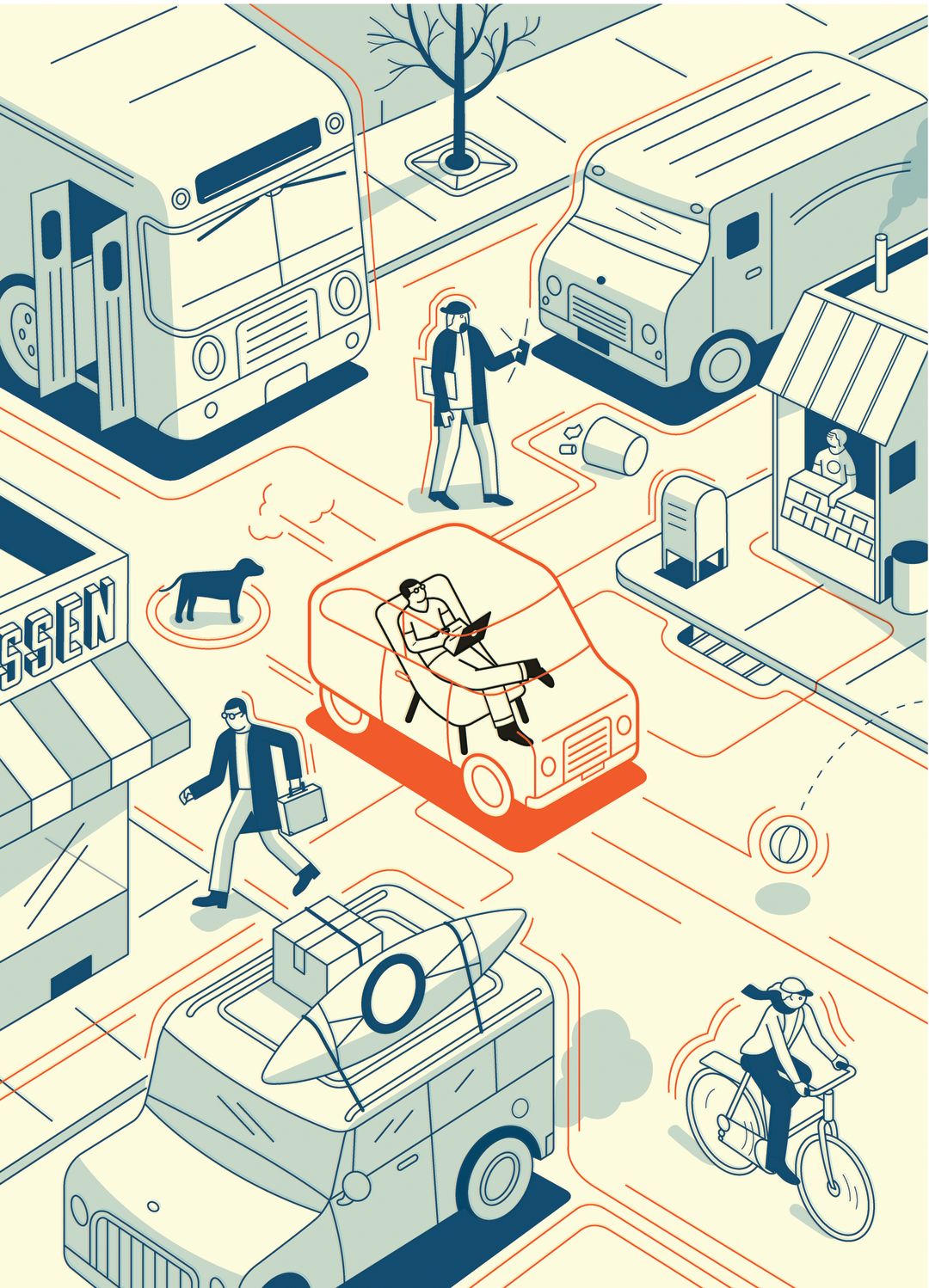Inside the New World of Autonomous Vehicles

Image: Harry Campbell/The iSpot
Elon Musk, Tesla’s sometimes puckish founder, recently predicted that the electric-car maker would have 1 million self-driving taxis on the road by next year. The statement went over about as well with investors as his April Fool’s joke had in 2018, when he tweeted that his company was bankrupt.
In fact, the auto industry’s dream of rolling out fleets of robocars, robotrucks and robo pizza-delivery vans might not materialize for a decade. The technical challenges and potential legal and financial risks simply are too steep for anyone, even a visionary fond of bad jests, to rush into the driverless fray.
Only one thing seems certain: Whenever they do become reality, autonomous vehicles will have a cultural downside, as well as a technological upside.
First, the positives. Self-driving autos will bolster safety and reduce injuries and deaths, as radar, lidar, cameras, sensors, semiconductors, and software replace humans’ problematic eyes, reflexes, brains and temperaments.
Truly autonomous cars will communicate with one another to avoid other vehicles and pedestrians. They’ll heed warning signs and scrupulously follow speed limits. Congestion—and the time needed to reach a destination—will decline, as traffic follows the most efficient routes, vehicles safely operate more closely to one another, and distractions, emotions and lapses in concentration depart the motoring equation.
This could be a boon for Florida cities such as Sarasota during the tourist season. Perhaps with that in mind, Florida Gov. Ron DeSantis signed a bill into law in June that removed many restrictions on the testing and development of self-driving vehicles in the state. The law also allows self-driving cars without humans on the road. Meanwhile, humans inside self-driving vehicles will be exempt from the ban on texting.
No benefit is unalloyed, however. Self-driving cars will have one big downside: They’ll make it hard—impossible for the digitally addicted—to elude the din of social media, online ads, text messages, videogaming and the 24-hour-a-day workplace.
In popular culture, the car historically has been portrayed as a haven from the tyranny of the everyday. Having trouble with your girlfriend or boyfriend or spouse (or maybe all of them)? Don’t want to study another minute for your college chemistry exam? Hate your job? A long drive to no particular destination, maybe with the radio as your sole companion, might help.
However, everyone in an autonomous vehicle will be a passenger, not a driver. And they’ll be sitting ducks for the temptations conveyed by infotainment systems, high-speed mobile internet connections and video displays. Great for Facebook, Amazon.com, Spotify, Netflix, Google and Skype. Not so great for souls seeking solace or reflection.
Of course, the passengers could ignore or turn off the entertainment and communication systems. But will they, when doing so might make them miss a message from a pal, a memo from the office, or a video of a cat in a tuxedo, merrily playing a Mozart sonata?
Think of the friends, relatives, co-workers and strangers you see every day reflexively checking and rechecking their phones. Now, envision them in a self-driving car stuck in traffic. How many could resist making a teeny purchase or two on Amazon? Or rummaging through their email?
Worse, for some people, autonomous cars will become an extension of the workplace, much as New York City commuter trains already are for a silent minority obliviously pecking away at laptops or tablets until they reach their destination.
All this will hasten the end of the automobile’s once formidable mystique, already dead to much of the millennial generation.
For close to a century, driving and freedom have been intertwined in the American psyche. (To many, the concept always has been a myth, but even myths can be comforting. Think Santa Claus, the tooth fairy and trickle-down economics.)
This theme recurs in books, TV shows and movies: Dean Moriarty and Sal Paradise crisscrossing the U.S. in On the Road, Todd and Buzz going coast-to-coast on Route 66, and Thelma and Louise fleeing injustice in a 1966 T-bird that delivers them to a terrible fate. In line with this, the list of songs connected to cars and the road is longer than the interstate highway system: “Take It Easy,” “Pink Cadillac,” “Highway to Hell,” “Little Red Corvette,” “Fun Fun Fun” and on and on and on.
Six decades ago, in Travels With Charley, John Steinbeck chronicled a 10,000-mile trip in a custom-fitted pickup with his pooch Charley, from Long Island to Maine to the Pacific Northwest, California, New Orleans and back to New York, in search of the America he feared he’d lost.
Parts of the lovely narrative reflect his musings about the land, towns, and people he sees from the driver’s seat. It’s hard to picture him writing the same book if he had been sitting inside a self-driving truck, watching movies, playing Fortnite, sending emails and only occasionally peeking out at the scenes flashing by. But that will become the norm when autonomous vehicles rule the roadway.



